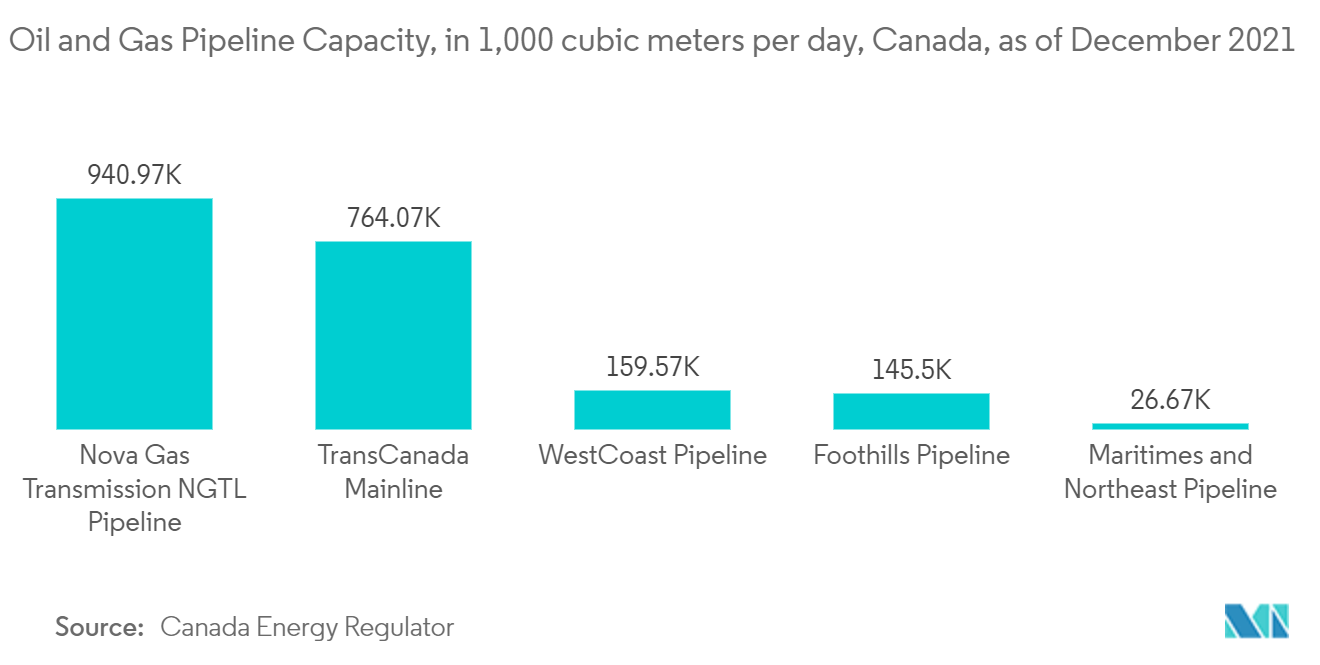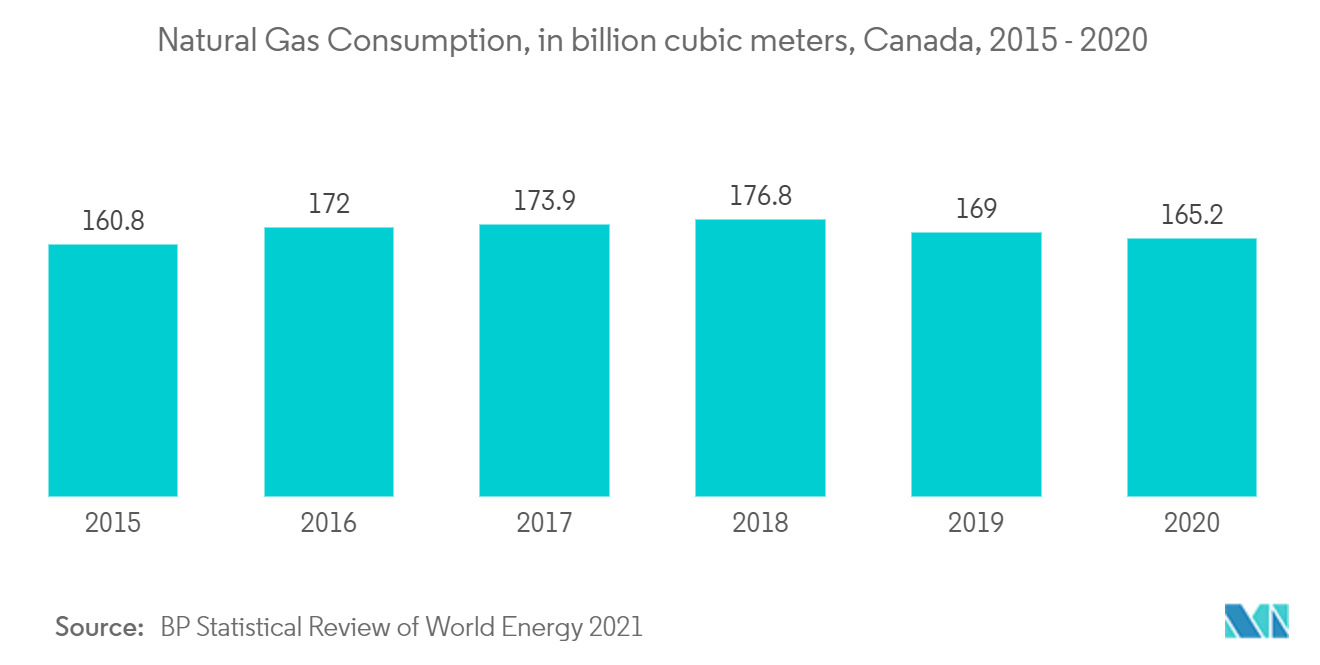Market Trends of Canada Oil and Gas Midstream Industry
This section covers the major market trends shaping the Canada Oil & Gas Midstream Market according to our research experts:
Transportation Segment Expected to Dominate the Market
- The pipeline is the most economical way of transporting natural gas, crude oil, and petroleum products over a long distance. As of 2021, Canada had 840,000 km of pipelines that supply oil and gas across the country.
- Western Canada is the largest market due to the presence of an extensive network of oil and gas pipelines across the region. Moreover, due to strict government regulations and a lack of social acceptance in the region toward crude oil pipelines, the market is shifting toward natural gas pipelines.
- In 2020, Alberta and Quebec framed a plan to develop a 750 km pipeline, which will carry natural gas from Alberta, across northern Ontario, and through the Abitibi region to a natural gas liquefaction complex at Port Saguenay. The aim is to export 11 million metric tons of LNG per year from Western Canada. The project is worth USD 13 billion and is expected to create ample opportunities for pipeline services, such as pre-commissioning and commissioning and pigging services in the coming years.
- Moreover, the country is planning to commission its Trans Mountain Pipeline Expansion Project with a capacity of 590,000 barrels per day by 2023. The length of the pipeline is 980 kilometers, and the project has an investment cost of USD 4.144 billion. As of December 2021, the natural gas pipeline Nova Gas Transmission Ltd (NGTL) had the highest capacity among all Canadian pipelines, at some 941 million cubic meters per day.
- Due to the above points, the transportation segment is expected to dominate the Canadian oil and gas midstream market in the forecast period.

Increasing Gas Pipeline Network Driving the Market Demand
- Canada is witnessing a rising demand for natural gas, particularly in the power sector. Any disruption in the gas supply can cause disruption in power generation, which, in turn, can affect gas suppliers, the power industry, along with the manufacturing sector.
- In 2020, Canada produced 165.2 billion cubic meters of natural gas, which is comparatively higher than the 160.8 bcm produced in 2015.
- In December 2021, the Canadian Energy Regulator (CER) approved the purchase of the Wolverine Lateral pipeline from NOVA Gas Transmission Ltd (NGTL) to Northern Lights Gas Co-op Ltd. TC Energy and Northern Lights are currently working on the necessary documentation to complete this purchase process.
- Moreover, in November 2021, the Alberta Energy Regulator (AER) approved the final permits for the construction of phases 2 and 3 of the Alternative Supply Pipeline. The construction of these two phases is scheduled to start in Q1 of 2022. The project is scheduled for completion by April 2022.
- Due to the above points, an increase in the gas pipeline network is expected to drive the Canada oil and gas midstream market during the forecast period.

